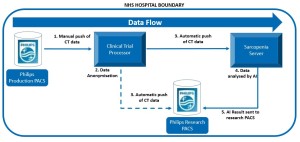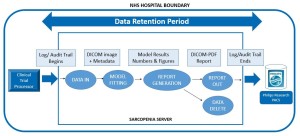Congress:
ECR25
Poster Number:
C-26772
Type:
Poster: EPOS Radiologist (educational)
DOI:
10.26044/ecr2025/C-26772
Authorblock:
T. Stoycheva, L. Honeyfield, M. Alsad, L. Musker, A. G. Rockall; London/UK
Disclosures:
Tina Stoycheva:
Nothing to disclose
Lesley Honeyfield:
Nothing to disclose
Mo Alsad:
Nothing to disclose
Laurence Musker:
Nothing to disclose
Andrea Grace Rockall:
Nothing to disclose
Keywords:
Artificial Intelligence, CT, Computer Applications-General, Workforce
This was a pilot study, which utilised routinely acquired CT scans of the body from a mixed adult patient population including, but not limited to, oncology, trauma, cardiovascular, chronic liver and renal disease, emergency and elective surgery. The CT scans were available on the ICHT production PACS and were performed as part of patients’ standard of care between January 2010 and September 2023.
Suitable cases were retrieved from production PACS and pseudonymised via a local instance of the Clinical Trial Processor hosted within the NHS. The pseudonymised DICOM data was sent to research PACS and to the Sarcopenia AI tool for analysis (Figure 2).

Fig 2: Data flowchart from Production PACS to Research PACS

Fig 3: Data processing on the Sarcopenia Server